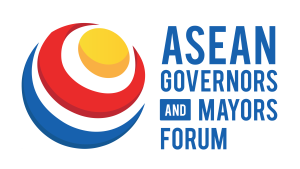Gujarat, a state in western India, was struck by an earthquake with magnitude 7.7 on 26 January 2001. It was estimated that more than 13,000 people lost their lives and thousands were injured. It was also reported that over 300,000 buildings collapsed and more than twice that number were severely damaged. It was tragic as the region also suffered from drought and the aftermath of a cyclone in the previous years (ADRC).
The restoration programme was implemented in Patanka Village (located in Patan District), approximately 100 km from the epicentre of the earthquake. Thus, it was named the Patanka Navijivan Yojana (PNY: Patanka New Life Project).
PNY placed an emphasis on holistic approach and specific focus was given to the improvement of the livelihood, in addition to building a more resilient community for future disaster. In practice, PNY went through three phases: 1) Principles and Planning, 2) Project Implementation, and 3) Ensuring Sustainability.
Stage 1: Principles and Planning
Principles
- participatory (gradual increase of community involvement)
• community are sufficiently equipped to be able to cater to their immediate needs
• social, economic, and psychological aspects are integral part of the programme - cultural aspects are incorporated • the actions are replicable by the community
Planning
The programme engaged community from the earliest stage. Community and local government were actively consulted to ensure that ‘’the strategies are culturally and environmentally compliant, acceptable to the people and are within the framework and guidelines laid down by the local government” (UNCRD Handbook). Implementation plan of various components of the project, based on local needs and existing capacities were implemented.
Stage 2: Project Implementation
Specific needs of local people were identified. This includes recognition of local people’s need of different ethnicities and the fact that different disasters raise specific needs. It was found that cultural acceptance of external aid was as important as the aid itself. Community was trained to be able to replicate house building using the same material and technology that is locally available.
Government was involved to make sure the project aligns with the guidelines for rehabilitation, to ensure uniform distribution of resources, to ensure community’s acceptance for the project team, and due recognition of the provisions made in the plan. Winning community’s confidence was an important part of this stage.
Capacity building activities ranged from counselling people experiencing trauma of a disaster to empowering them so they could take care of their own needs in the case of any future disasters. In this project, unique series of “Shake Table Demonstrations” were carried out to make community aware of the advantages of adopting earthquake resistant construction and to build people’s confidence in earthquake resistant building. Covered in this step were introduction to disaster resistant building technology, raising the demand of a safer house without compromising on quality of construction, development of leadership skills, and many others.
Joint implementation step in this project covered not only rebuilding of homes, but also rebuilding of lives. Thus, activities included house reconstruction action plan, house retrofitting action plan, livelihood action plan, social action plan, and many others.
Stage 3: Ensuring Sustainability
This stage is to ensure that community is able to take care of its development needs and is resilient against future disasters. At this stage, project focused on people’s knowledge more than physical infrastructures. Members of the community were empowered to own their own project. Capacity building activities in this PNY project managed to bring confidence to house owners on earthquake resistant building technology. Trained local people were capable of making their present houses and possible future ones using the same technology. This led to the creation of “pool resources” to market the services not just within Patanka but to neighbouring villages. There, livelihood opportunity raised in a region where agricultural produce is not enough to sustain households.











